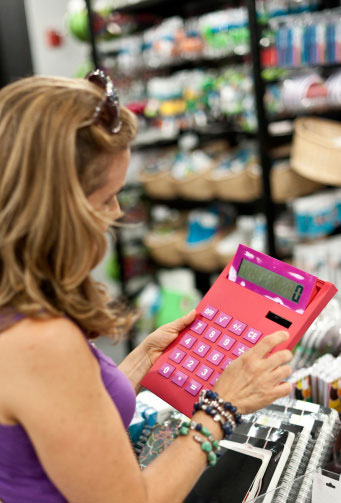By John Gregory
 Retailers are in full back-to-school mode, and with good reason. More than 50 million students will be going back to school this year, and many will need school supplies, clothes and other items that will be purchased during the summer shopping season. This typically runs from Memorial Day to Labor Day, making it the second busiest shopping event of the year. You can expect this season to see a continued shift in consumer behaviors, as the lines between online and traditional in-store activity blur, and consumers shop smarter before opening their wallets.
Retailers are in full back-to-school mode, and with good reason. More than 50 million students will be going back to school this year, and many will need school supplies, clothes and other items that will be purchased during the summer shopping season. This typically runs from Memorial Day to Labor Day, making it the second busiest shopping event of the year. You can expect this season to see a continued shift in consumer behaviors, as the lines between online and traditional in-store activity blur, and consumers shop smarter before opening their wallets.
According to the National Retail Federation, consumers spent $72.5 billion on back-to-school purchases in 2013, down from $83 billion spent in 2012. Online sales are expected to increase 16 percent this season, with back-to-school purchases averaging $50.17, according to eMarketer. It is widely believed that fluctuations in back-to-school spending are attributed to consumers shopping smarter with mobile, looking for the best deals, sometimes “showrooming” in-store, and limiting purchases to necessities. In response to a Google survey, nearly all respondents said a sale or promotion would encourage them to make a purchase. Although consumer confidence is growing along with disposable income, consumers are doing their research before they buy, whether in local establishments or national retail chains.
Who’s doing the shopping?
 Most BTS shoppers are Moms, but nearly half of Dads responding to an AOL survey mentioned they are primarily responsible for the BTS shopping in their household. Although Dads have a bigger role in back-to-school shopping today than in previous years, Moms still seem to be more efficient, getting all of their shopping done in two and a half stores. Dads typically go to three stores. Regardless of who is doing the shopping, most have a list of planned purchase items. The vast majority, 90 percent, of BTS shopping occurs within a 30-day period between July and September.
Most BTS shoppers are Moms, but nearly half of Dads responding to an AOL survey mentioned they are primarily responsible for the BTS shopping in their household. Although Dads have a bigger role in back-to-school shopping today than in previous years, Moms still seem to be more efficient, getting all of their shopping done in two and a half stores. Dads typically go to three stores. Regardless of who is doing the shopping, most have a list of planned purchase items. The vast majority, 90 percent, of BTS shopping occurs within a 30-day period between July and September.
Retailers trying to reach back-to-school shoppers need to start advertising early to get on their list. Although the majority of purchases are made in August, nearly one-fourth of shoppers participating in an industry survey indicated they begin researching BTS purchases prior to the Fourth of July holiday. “Customers are telling us they want to have an early jump on things,” says Demos Parneros, Staples North American Stores & Online president.
Consumer shopping behaviors of high school and college students differ greatly from their parents. Unlike their parents, students are shopping all year long, and are less receptive to back-to-school shopping events as a result. “Shopping is not an event that you do; shopping is something that’s just part of your day,” notes Stephanie Wissink, co-director/Sr. research analyst, Piper Jaffray. Students tend to buy what they need when they need it, especially online, and are more receptive to mobile ads than their parents. According to the survey, “Shoppers for high school students expect to spend $347 on average; people shopping for college expect to spend nearly double that amount, at $614 on average.”
Growth of online sales
 While most purchases take place in-store, online BTS sales are growing. In fact, almost half of all electronics purchases and close to one-third of apparel sales are done online, according to an independent study conducted by AOL. Nearly half of consumers agree that advertising helps find relevant products, and about one out of three say online ads help them find their back-to-school items. Consumers will shop online as long as it is convenient, and offers competitive pricing, better service and a wider product selection. Nearly two out of three shoppers will use their smart phones for back-to-school purchases, and the number of consumers planning to use mobile coupons is up 15 percent from 2012, according to a Deloitte & Touche BTS Survey. In addition, the survey discovered that two-thirds of consumers plan to use social media reviews and recommendations before making a buying decision, a nearly one-third increase from 2012.
While most purchases take place in-store, online BTS sales are growing. In fact, almost half of all electronics purchases and close to one-third of apparel sales are done online, according to an independent study conducted by AOL. Nearly half of consumers agree that advertising helps find relevant products, and about one out of three say online ads help them find their back-to-school items. Consumers will shop online as long as it is convenient, and offers competitive pricing, better service and a wider product selection. Nearly two out of three shoppers will use their smart phones for back-to-school purchases, and the number of consumers planning to use mobile coupons is up 15 percent from 2012, according to a Deloitte & Touche BTS Survey. In addition, the survey discovered that two-thirds of consumers plan to use social media reviews and recommendations before making a buying decision, a nearly one-third increase from 2012.
Most consumers want a seamless shopping experience, whether they choose to buy in-store or online. The most popular back-to-school online shopping sites are stores that have both a physical and virtual presence like Sears, Best Buy, Apple and Walmart. AOL’s survey also revealed that 70% of consumers spend $100 or more on back to school apparel. However, more than half of consumers purchase electronic products. This is in addition to school supplies purchases, of course. Nearly half of consumers polled want to purchase products online for pickup at their neighborhood store, according to an online survey conducted by consumer research agency, The Omnibus Company. Smart phones and mobile technology are making it easy for consumers to comparison shop while in-store, and most will browse for BTS products in a local store and purchase them online.
The retailers who will win the 2014 back-to-school season will make the shopping experience seamless across digital and brick-and-mortar stores, with a focus on value and convenience for busy parents, who will be shopping online early and often.